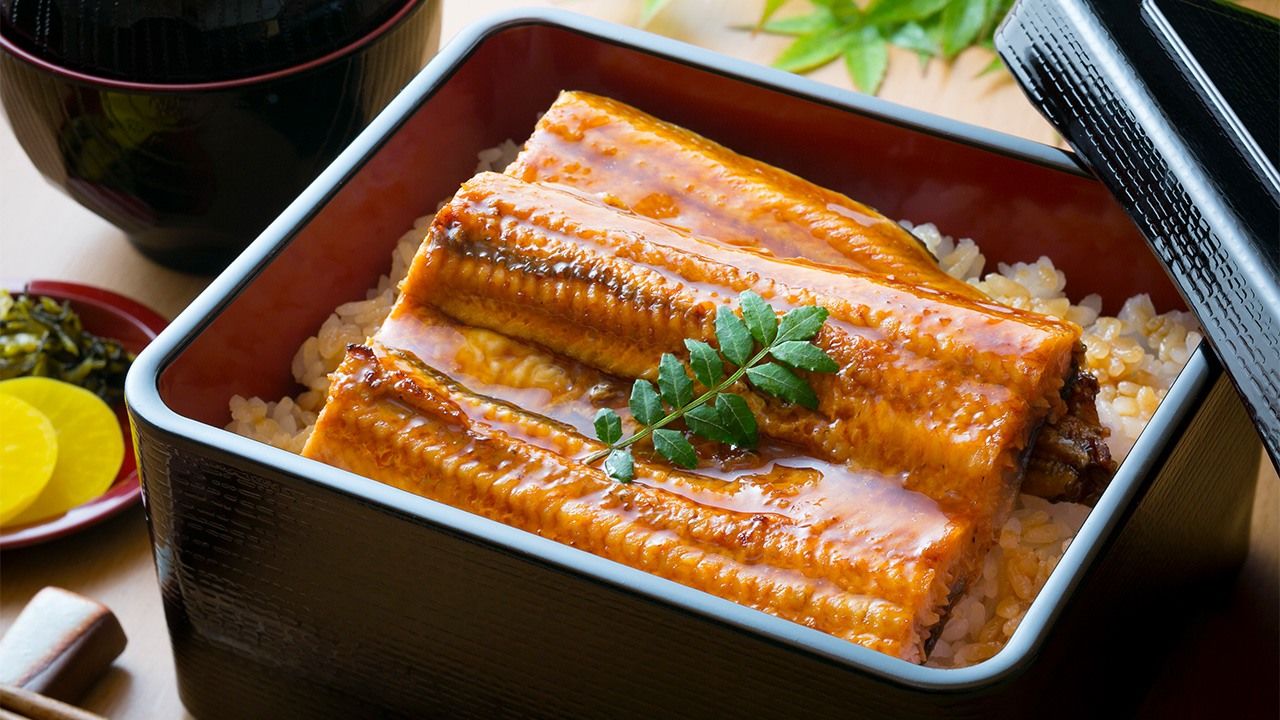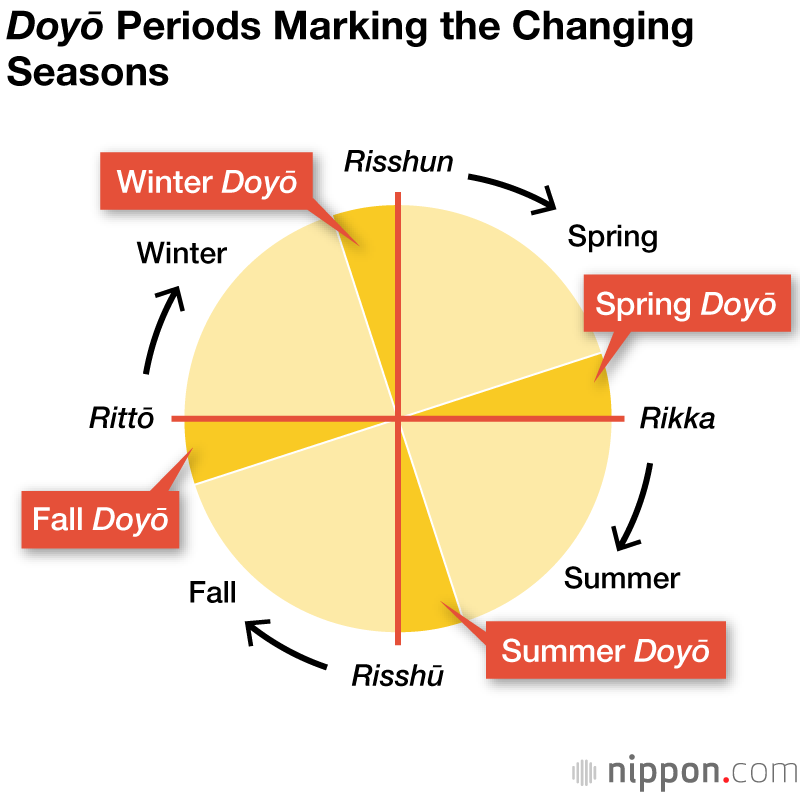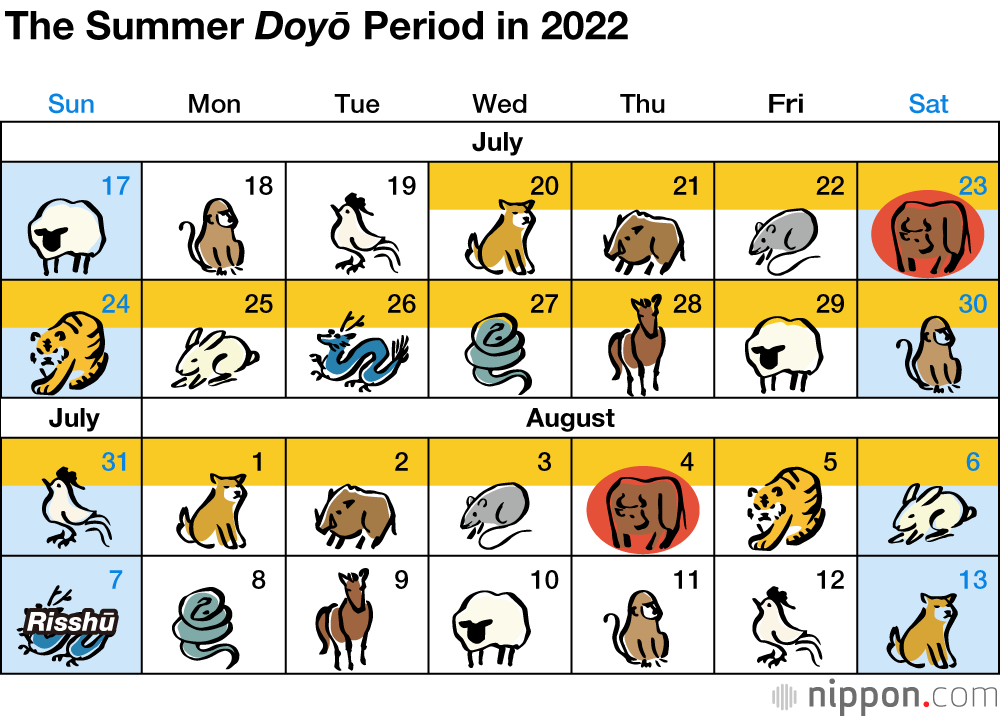
“Doyō no Ushi no Hi”: Japan’s Midsummer Day of the Ox
Culture Food and Drink- English
- 日本語
- 简体字
- 繁體字
- Français
- Español
- العربية
- Русский
As Japan’s summer really starts to heat up, signs advertising eel for doyō no ushi no hi (midsummer day of the ox) begin to appear all around town. The aroma of rich tare sauce and fat as the eel is grilled over charcoal, and its soft plump texture have made it a popular summer dish (although overfishing has put this tradition under threat). In 2022, the day of the ox will fall on two days: July 23 and August 4. But how is the date for those days decided?
In the traditional calendar, doyō refers to a certain period that marks the turn of each season. It is specifically the 18-day period immediately before risshun or the first day of spring; rikka, the first day of summer; risshū, the first day of fall; and rittō, the first day of winter. This year, the first day of fall will be August 7, so the summer doyō is from July 23 through August 6.
It is common to use the eto zodiacal animals that form a 12-year cycle to refer to years. For example, 2022 is the Year of the Tiger. However, originally these animals were also used in the Chinese calendar to refer to days and months. As there are 12 animals, there will always be at least one day of the ox within an 18-day doyō period and in some years, there are two. These are known as doyō no ushi no hi, meaning a day of the ox that occurs during a doyō period.
Hiraga Gennai, an Edo period (1603–1868) scholar, is often said to have instigated the tradition of eating eel on doyō ushi no hi. Based on the old folklore belief that consuming food with a name beginning with u protects against the summer heat, he advised an unagi (eel) restaurant to make the connection by encouraging customers to partake on ushi no hi
This summer, there will be two such days of the ox, but as farmed eels are in short supply the prices are steep. It may be wise to treat yourself once and enjoy the second day by following tradition with another appropriate food, such as udon or umeboshi (pickled plums).
(Translated from Japanese. Banner photo © Pixta.)

